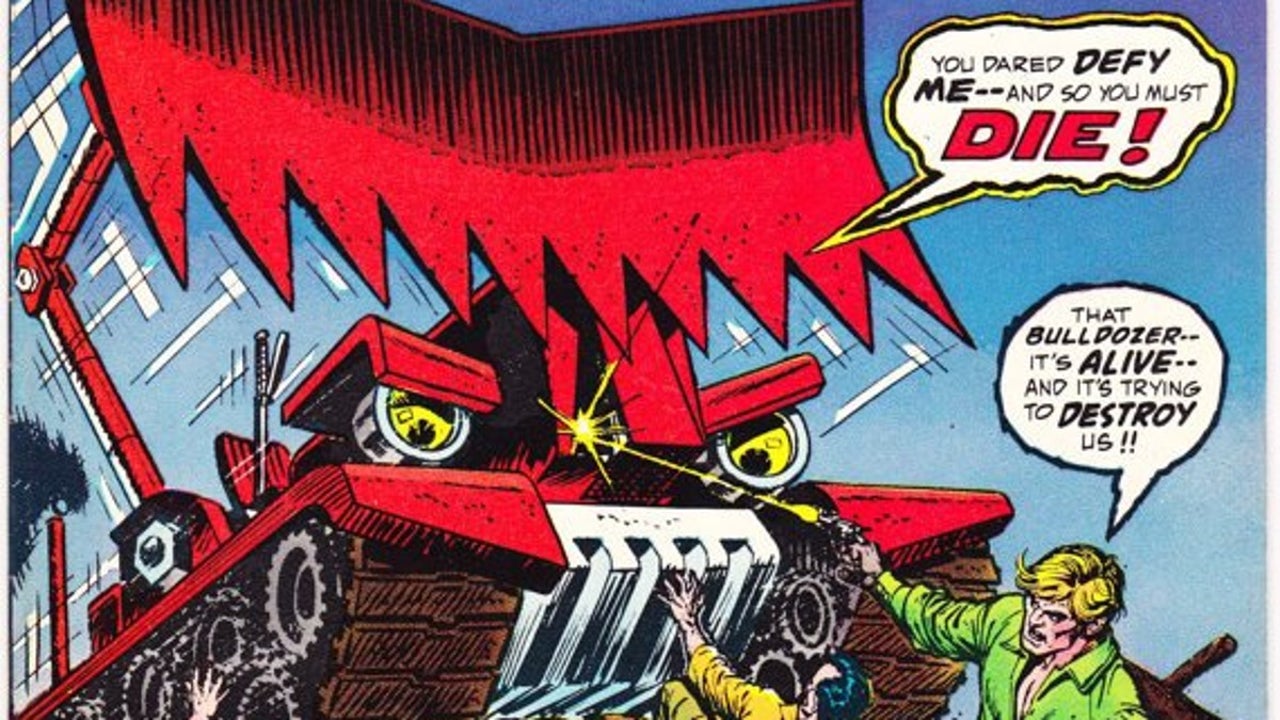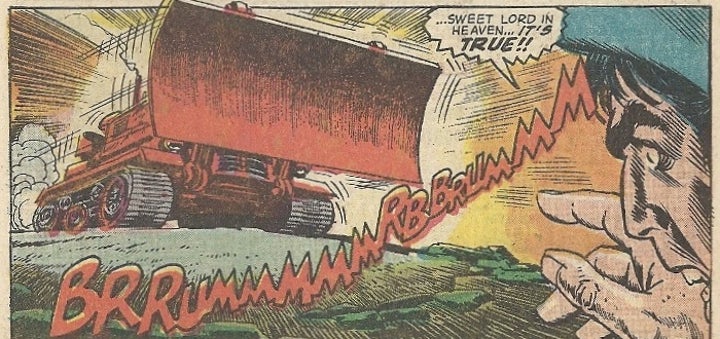News
Alien killer bulldozers in comic book format: the incredibly strange story of ‘Killdozer’
The machine rebellion, Marvel-style.

- September 24, 2023
- Updated: March 7, 2024 at 2:28 PM

In November 1944, Theodore Sturgeon, one of the most renowned science fiction writers in history, known for, among other things, writing several scripts for ‘Star Trek,’ wrote a story for ‘Astounding’ magazine called ‘Killdozer.’ Its plot, to say the least, was bizarre: an alien weapon possesses a construction bulldozer, and it starts killing anyone it encounters. It may sound silly, but it fascinated at least two people.
More Killdozer, it’s war
The first person, a certain Jerry London, a relatively unknown director and producer, premiered the adaptation of ‘Killdozer!’ directly on television in 1974, with a twist to make it more sinister. In this case, the evil force came from a meteorite rather than an ancient alien race that once dominated us, as in the original novel. The book is better than the movie, as always.
The TV movie was a notable critical and commercial failure but has managed to become a cult classic among a certain type of trash-loving audience (among whom, I must admit, I am included). Twelve years later, Stephen King would take the idea to make his only film as a director, the utterly psychedelic ‘Maximum Overdrive.’

Right after the movie, its corresponding – and quite unexpected and unnecessary – comic book adaptation arrived in issue #6 of ‘Worlds Unknown.’ On its cover, the bulldozer spoke (“You dared to defy me… and now you must die!”), and it had a fabulous design… which wasn’t found within the comic‘s pages itself. It didn’t speak either. Nor did it have, while we’re at it, a female character.
Gerry Conway, a veteran author for both Marvel and DC, best known for his work on ‘Spider-Man,’ scripted this adaptation, which differed completely from its source material, both as a book and as a movie. In fact, they ultimately defeat the killer bulldozer simply by connecting a cable. There’s nothing like being an expert. The comic has gone down in history as one of the weirdest things to ever receive an adaptation (a loose adaptation of a movie that loosely adapted a short story). And of course, it’s worth knowing about, even if only for its curiosity value.
Editor specializing in pop culture who writes for websites, magazines, books, social networks, scripts, notebooks and napkins if there are no other places to write for you.
Latest from Randy Meeks
- From the random button to interactive series: the 5 biggest mistakes in Netflix history
- The 6 best animes you can't miss this spring
- The psychedelic PlayStation video game that was actually an artistic project that no one understood
- The Switch 2 has disappointed me with its luxury prices for a premium remake
You may also like

Upcoming EV Launch Positions Japan as a Key Player in Competitive Electric Vehicle Market
Read more

Elon Musk’s Powerwall 3 Revolutionizes Energy Storage
Read more

Nissan Launches Affordable N7 Electric Sedan in China
Read more

Pre-Orders Open For Kia’s PV5 With Impressive 249-Mile Range
Read more

This Pixel feature is great if you have allergies
Read more

Why Microsoft’s new Phi-4 reasoning models are so important
Read more